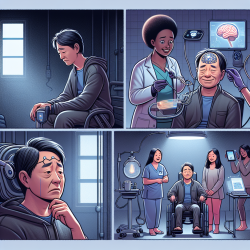Understanding Communication Impairments in Parkinson's Disease
Parkinson's Disease (PD) is a complex neurological disorder that affects movement and often leads to speech and communication challenges. As a practitioner, understanding the intricacies of these impairments is crucial for providing effective therapy. Recent research has highlighted the varying effects of treatments such as levodopa therapy and deep brain stimulation (DBS) on speech disorders associated with PD. In particular, the Lee Silverman Voice Treatment (LSVT) program has emerged as a leading technique for addressing dysarthria in Parkinson's patients.
Deep Brain Stimulation: A Double-Edged Sword?
Deep Brain Stimulation, particularly of the subthalamic nucleus (STN-DBS), has shown promise in improving limb function in PD patients. However, its effects on speech are more complex. While STN-DBS can increase articulation rate, it often has minimal or negative impacts on speech production quality. An alternative, caudal zone incerta stimulation (cZi-DBS), has been found to decrease articulation rate and quality, suggesting it may be more detrimental to speech than STN-DBS.
The Power of LSVT
The Lee Silverman Voice Treatment (LSVT) program has been recognized as the most effective speech therapy technique for dysarthria in PD. Research involving Cantonese speakers with idiopathic Parkinson's disease demonstrated significant improvements in loudness and intonation following LSVT, though changes in lexical tone were not significant. This highlights the importance of targeted therapy in managing specific speech impairments.
Exploring Language Disorders in Parkinson's Disease
Beyond speech, PD is increasingly associated with language disorders, particularly in its later stages. Research has shown that PD affects all stages of language production, from conceptualization to processing. Practitioners should be aware of these potential deficits and consider them when designing comprehensive therapy plans.
Key Takeaways for Practitioners
- Stay Informed: Keep up with the latest research on PD and communication impairments to enhance your therapeutic strategies.
- Utilize Effective Treatments: Consider incorporating LSVT into your practice for patients with dysarthria.
- Monitor Treatment Effects: Be aware of the potential negative impacts of DBS on speech and adjust therapy plans accordingly.
- Address Language Disorders: Recognize and address language impairments in PD patients to provide holistic care.
By implementing these insights, practitioners can improve their skills and provide more effective therapy to individuals with Parkinson's Disease. To delve deeper into the research, I encourage you to read the original paper titled Communication Impairments in Parkinson's Disease.










